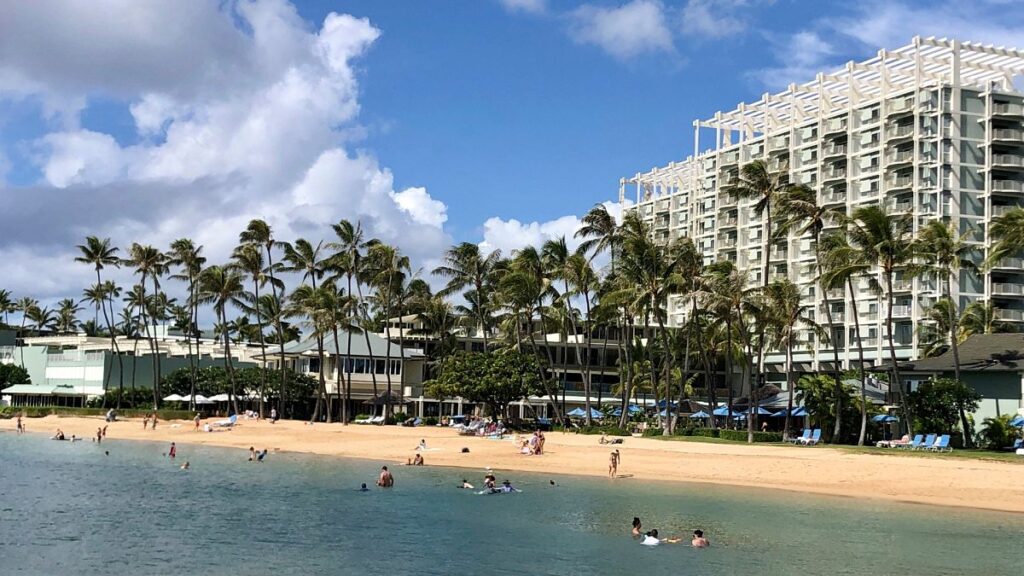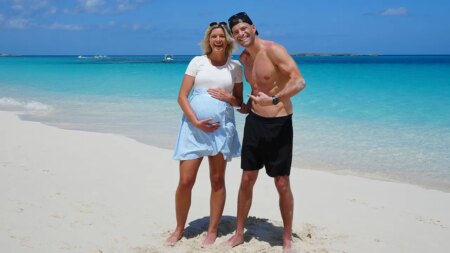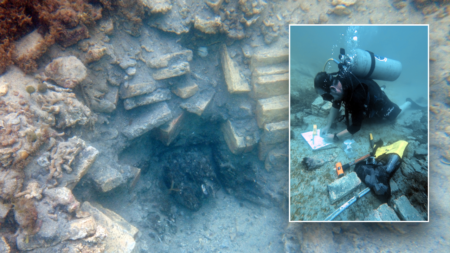In a first-of-its-kind move, Hawaii lawmakers are ready to hike a tax imposed on travellers staying in hotels, vacation rentals and other short-term accommodations. They are earmarking the new money for programs to cope with a warming planet.
State leaders say they’ll use the funds for projects like replenishing sand on eroding beaches, helping homeowners install hurricane clips on their roofs and removing invasive grasses like those that fueled the deadly wildfire that destroyed Lahaina two years ago.
A bill scheduled for House and Senate votes this week — initially scheduled for Wednesday but moved to Friday — would add an additional 0.75 per cent to the daily room rate tax starting 1 January 2026.
It’s all but certain to pass given Democrats hold supermajorities in both chambers and party leaders have agreed on the measure. Gov. Josh Green has said he would sign it into law.
Officials estimate the increase to the tourist tax would generate $100 million (€88.4 million) in new revenue annually.
“We had a $13 billion (€11.5 billion) tragedy in Maui and we lost 102 people. These kind of dollars will help us prevent that next disaster,” Green said in an interview.
Green said Hawaii was the first state in the nation to do something along these lines. Andrey Yushkov, a senior policy analyst at the Tax Foundation, a Washington, D.C.-based nonprofit organisation, said he was unaware of any other state that has set aside lodging tax revenue for the purposes of environmental protection or climate change.
How much tax will tourists pay in Hawaii?
The increase will add to what is already a relatively large duty on short-term stays.
The state’s existing 10.25 per cent tax on daily room rates would climb to 11 per cent. In addition, Hawaii’s counties each add their own 3 per cent surcharge, and the state and counties impose a combined 4.712 per cent general excise tax on goods and services, including hotel rooms.
Together, that will make for a tax rate of nearly 19 per cent.
The only large US cities that have higher cumulative state and local lodging tax rates are Omaha, Nebraska, at 20.5 per cent, and Cincinnati, at 19.3 per cent, according to a 2024 report by HVS, a global hospitality consulting firm.
The governor has long said the 10 million visitors who come to Hawaii each year should help the state’s 1.4 million residents protect the environment.
Green believes travellers will be willing to pay the increased tax because doing so will enable Hawaii to “keep the beaches perfect” and preserve favourite spots like Maui’s road to Hana and the coastline along Oahu’s North Shore.
After the Maui wildfire, Green said he heard from thousands of people across the country asking how they could help. This is a significant way they can, he said.
The hotel industry has mixed feelings
Jerry Gibson, president of the Hawaii Hotel Alliance, which represents the state’s hotel operators, said the industry was pleased lawmakers didn’t adopt a higher increase that was initially proposed.
“I don’t think that there’s anybody in the tourism industry that says, ‘Well, let’s go out and tax more.’ No one wants to see that,” Gibson said. “But our state, at the same time, needs money.”
The silver lining, Gibson said, is that the money is supposed to beautify Hawaii’s environment. It will be worth it if that’s the case, he said.
Hawaii has long struggled to pay for the vast environmental and conservation needs of the islands, ranging from protecting coral reefs to weeding out invasive plants and making sure tourists don’t harass wildlife, such as Hawaiian monk seals. The state must also maintain a large network of trails, many of which have heavier foot traffic as more travellers choose to hike on vacation.
Two years ago, lawmakers considered requiring tourists to pay for a yearlong license or pass to visit state parks and trails. Green wanted to have all visitors pay a $50 (€44) fee to enter the state, an idea lawmakers said would violate US constitutional protections for free travel.
Boosting the lodging tax is their compromise solution, one made more urgent by the Maui wildfires.
There is a large gap in conservation funding
An advocacy group, Care for Aina Now, calculated a $561 million (€496 million) gap between Hawaii’s conservation funding needs and money spent each year.
Green acknowledged the revenue from the tax increase falls short of this, but said the state would issue bonds to leverage the money it raises.
Most of the $100 million (€88.4 million) would go toward measures that can be handled in a one-to-two-year time frame, while $10 to $15 million (€8.8 to €13.3 million) of it would pay for bonds supporting long-term infrastructure projects.
Kāwika Riley, a member of the governor’s Climate Advisory Team, pointed to the Hawaiian saying, “A stranger only for a day,” to explain the new tax. The adage means that a visitor should help with the work after the first day of being a guest.
“Nobody is saying that literally our visitors have to come here and start working for us. But what we are saying is that it’s important to be part of the solution,” Riley said. “It’s important to be part of caring for the things you love.”
Read the full article here







